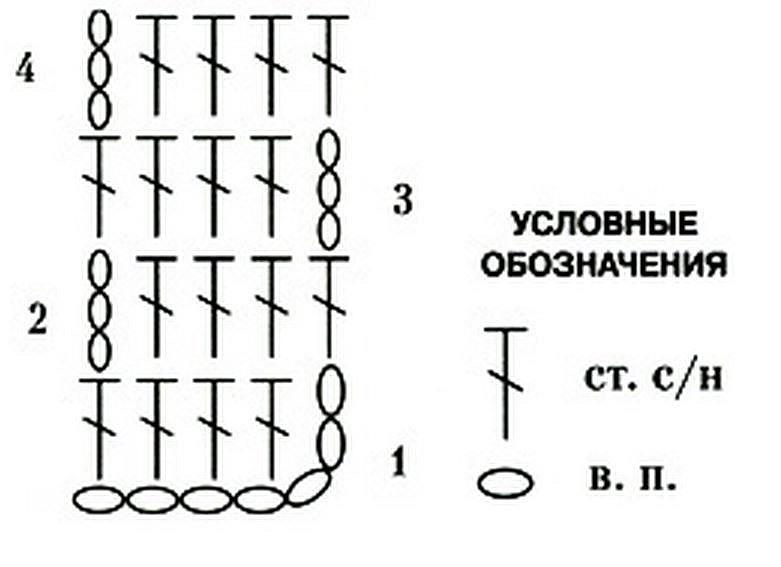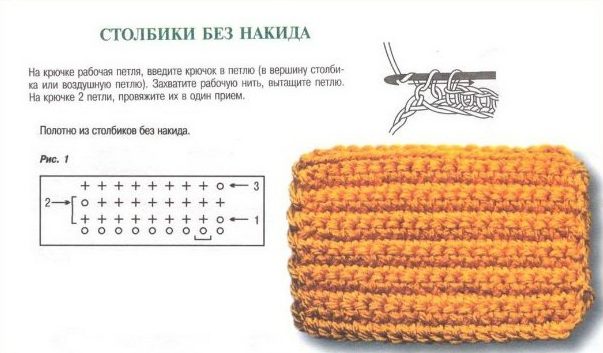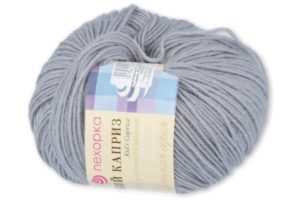 Yarn socks are the most common product for any craftsman. When doing larger things there will always be a couple of balls left. It is the socks that the craftsman will first make from the remaining yarn. But not every skein is suitable for such a simple product. In this article you will find information regarding thread for children's socks. A few words about yarn consumption and how to calculate it, as well as some models that a craftsman can make on his own using a hook and thread.
Yarn socks are the most common product for any craftsman. When doing larger things there will always be a couple of balls left. It is the socks that the craftsman will first make from the remaining yarn. But not every skein is suitable for such a simple product. In this article you will find information regarding thread for children's socks. A few words about yarn consumption and how to calculate it, as well as some models that a craftsman can make on his own using a hook and thread.
Which threads are best for knitting baby socks?
It is advisable to knit children's socks with durable fiber. It will stretch less and last a long time.
When choosing threads, pay attention to the following criteria:
 Warm models are well made from wool additives. Pekhorka is rich in wool, but it is not strong enough for this species. Therefore, you should pay attention to the line of special yarn that is designed only for such things.
Warm models are well made from wool additives. Pekhorka is rich in wool, but it is not strong enough for this species. Therefore, you should pay attention to the line of special yarn that is designed only for such things.- In any case, the choice should fall on hypoallergenic and soft fibers.
- Also pay attention to the season and warmth of the product. For winter and fairly warm clothes, these are thick varieties with high wool content. Summer ones, on the contrary, will be made of thin thread; cotton more often obeys such requirements.
On a note! There are very thin models that contain iris thread, they turn out very light and not hot. Plus, your feet will breathe well in such beautiful socks.
Yarn consumption for children's socks
Usually, socks do not require more than 100 grams of yarn. But consumption can always be calculated using special techniques and mathematical proportions. The calculation can be done in two ways:
- through weight;
- through the length of the thread.
When making calculations, in any case, you will have to knit a small fabric - this is a sample from which the required amount of yarn is determined.
- If you use the definition by weight, then simply weigh the sample and estimate how many of these squares are needed for the item. Multiply the weight and estimate by the weight of the skein how much will be needed.
- If the determination is by length, you will need to unravel the thread and measure its length.
We crochet socks for children of different ages
 Socks can be different not only in models, quality and color of thread, but also according to the age of the child. For example, comfortable booties are suitable for newborns. Below, 4 models of socks for children of different ages are presented for the masters. Descriptions and diagrams are available for each model. Therefore, even a beginner can connect these works.
Socks can be different not only in models, quality and color of thread, but also according to the age of the child. For example, comfortable booties are suitable for newborns. Below, 4 models of socks for children of different ages are presented for the masters. Descriptions and diagrams are available for each model. Therefore, even a beginner can connect these works.
Crochet booties for newborns
The most delicate and very soft crochet booties. With additional decorations. Simple patterns of the canvas allow even beginners not to make mistakes.

Take:
- children's yarn: pekhorka;
- hook according to the thickness of the pekhorka;
- ribbons and flowers for decoration.
Measurements. To create such a beautiful sock, a newborn needs to measure the length of the leg. Also measure the width of the sole at its widest point. But create an oval-shaped model for greater comfort. Also measure at the ankle, and add a small amount for the elastic.
Sample. Knit a small fabric according to the pattern - double crochets. Use it to determine the knitting density. This is the number of columns in a row per 10 cm and the number of such rows per 10 cm. Next, create a small proportion and count the number of columns for measurements.
Sole. For the sole, knit an oval-shaped product according to the pattern.

Side and toe. Next, knit a rise along the outer loops of the foot columns, and, without changing the number of loops, make a rise in several rows. Next, knit the toe. It represents exactly half of the foot diagram.
Rubber. Combine all the loops and knit in circular rows using a single crochet pattern.

Decoration. Use ribbons and a flower for decoration. Sew and thread ribbons.
Border. For the sides, make a border with shells using a crochet hook along the edge. Create the same pattern along the upper edge of the elastic.
When the baby starts to walk
This option is suitable for one-year-old children and those who are just taking their first steps. This model is distinguished by the absence of a side and a tighter fit to the leg. A special fastener at the ankle helps tighten the model with an elastic band. It will also be comfortable to step on, since there are no seams or extra loops along the foot and heel.

Take:
- sock yarn of medium thickness;
- hook according to the thickness of the thread;
- buttons for fastening.
Measurements. Measure the circumference of the leg at the ankle and subtract 1 cm for a tighter fit. Next, measure the length of the foot and its width.
Sample. Make a small fabric according to the double crochet pattern. This is a sample and will help you accurately calculate the stitches after determining the knitting density.
Foot. Knit the foot according to the given pattern. For it, use single crochets, so it will turn out very dense and even.

Sides. Next, make two rows of connecting loops; you can use contrasting threads. And only after them perform rows with single crochet stitches. About two such rows are enough.

Toe. The unusual toe is made with single crochets, behind the middle wall.

Rubber. Also create circular rows with single crochets. For fastening, use strips from one row of double crochets. You need to complete two stripes. Additionally use contrasting thread. Sew buttons, assess in advance the place for a more advantageous fastener.
Socks for a child 4–5 years old
Older children should like bright socks. At this time, children become very picky and are no longer ready to wear boring colors. These are the kind of gifts they will like.

Take:
- sock yarn;
- hook.
Measurements. Measure the circumference of the leg at the instep, the circumference of the ankle and the length of the foot.

Sample. Knit the fabric and calculate the density of the knitting and then, using the proportion, determine the number of columns for the model.

Foot. The model begins in the middle of the heel and the fabric is knitted along 1/2 of the instep circumference. Knit to the toe, then reduce it a little according to the size of the leg. Next, the work unfolds and you will need to knit in straight and reverse rows, but not with a double crochet pattern, but with an openwork fabric. At the same time, grab the fabric of double crochets on each side along the outer loops. Return to the middle of the heel again.
Heel. Work the heel in unfinished rows according to openwork patterns.
Rubber. For the rib, start knitting in circular rows. Initially it will be an openwork pattern, and then two rows of double crochets behind the back wall.
We knit children's socks for older people
An interesting combination of colors and dense patterns allow the socks to last a long time.

Take:
- sock yarn;
- hook;
- emblem.
Measurements. Measure the circumference of the leg at the instep, the circumference of the ankle and the length of the foot.
Sample. Create a small square using a single crochet pattern. First calculate the density of the knitting, and then the loops to work with.
Toe. It starts with an amigurumi loop. Next, add loops with single crochets to the desired size. Knit to the beginning of the heel.
Heel. Knit in unfinished rows in forward and reverse directions.

Rubber. Make circular rows again and knit to the desired length of the elastic. Make decreases along the heel and side surfaces. A charming crochet elastic band with convex columns will complete the job.

What decorations can be made for children's socks
 You can decorate your socks with different things. But it’s worth knowing that you can decorate it with different beads for a newborn. But for a one-year-old child they will no longer be needed, since the baby can tear off small elements and this is unsafe. Models for older children are good with small emblems. But bright works with openwork don’t need to be decorated at all; they are incomparable in themselves.
You can decorate your socks with different things. But it’s worth knowing that you can decorate it with different beads for a newborn. But for a one-year-old child they will no longer be needed, since the baby can tear off small elements and this is unsafe. Models for older children are good with small emblems. But bright works with openwork don’t need to be decorated at all; they are incomparable in themselves.
Important! When choosing decorations, make sure that they are comfortable and do not harm the child.


 Warm models are well made from wool additives. Pekhorka is rich in wool, but it is not strong enough for this species. Therefore, you should pay attention to the line of special yarn that is designed only for such things.
Warm models are well made from wool additives. Pekhorka is rich in wool, but it is not strong enough for this species. Therefore, you should pay attention to the line of special yarn that is designed only for such things. 1
1





